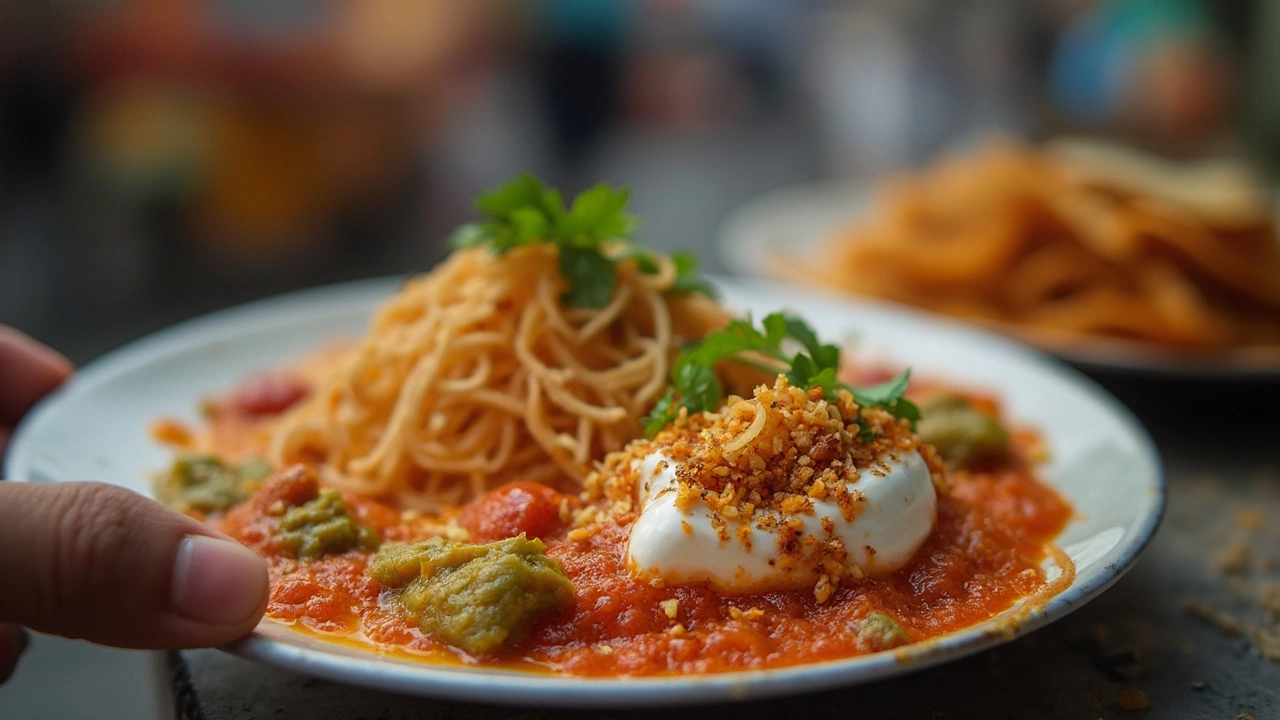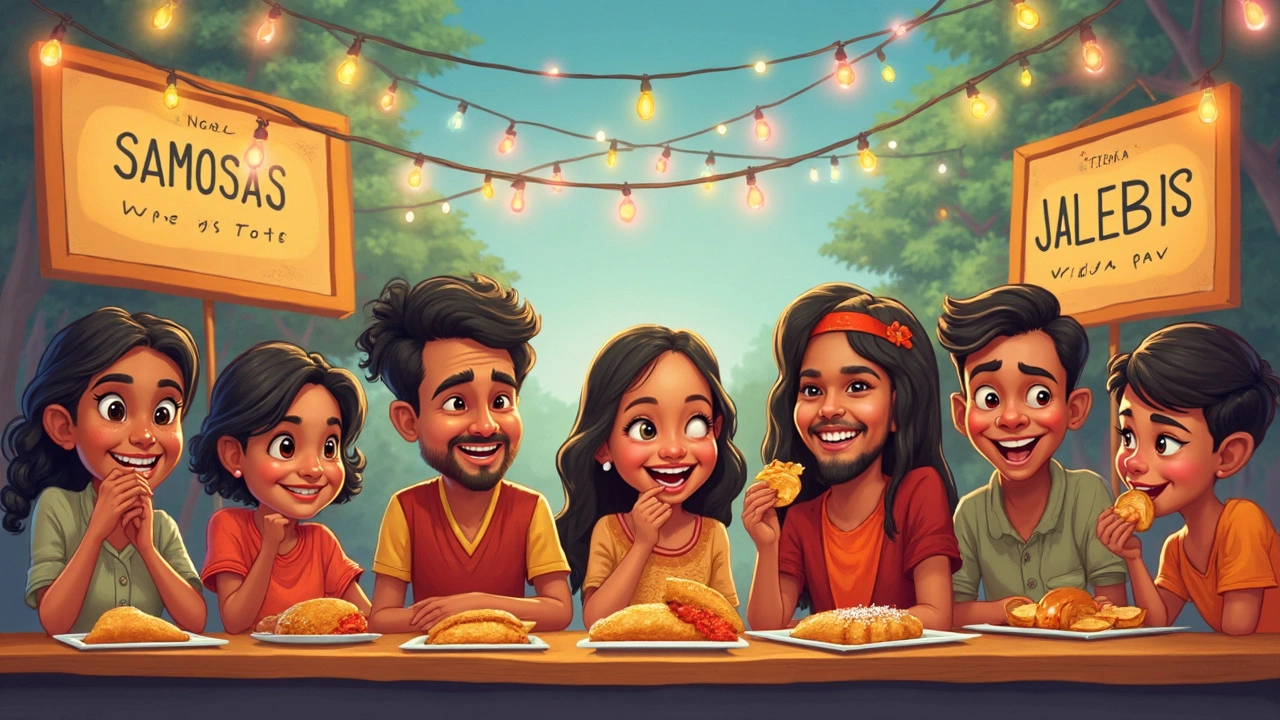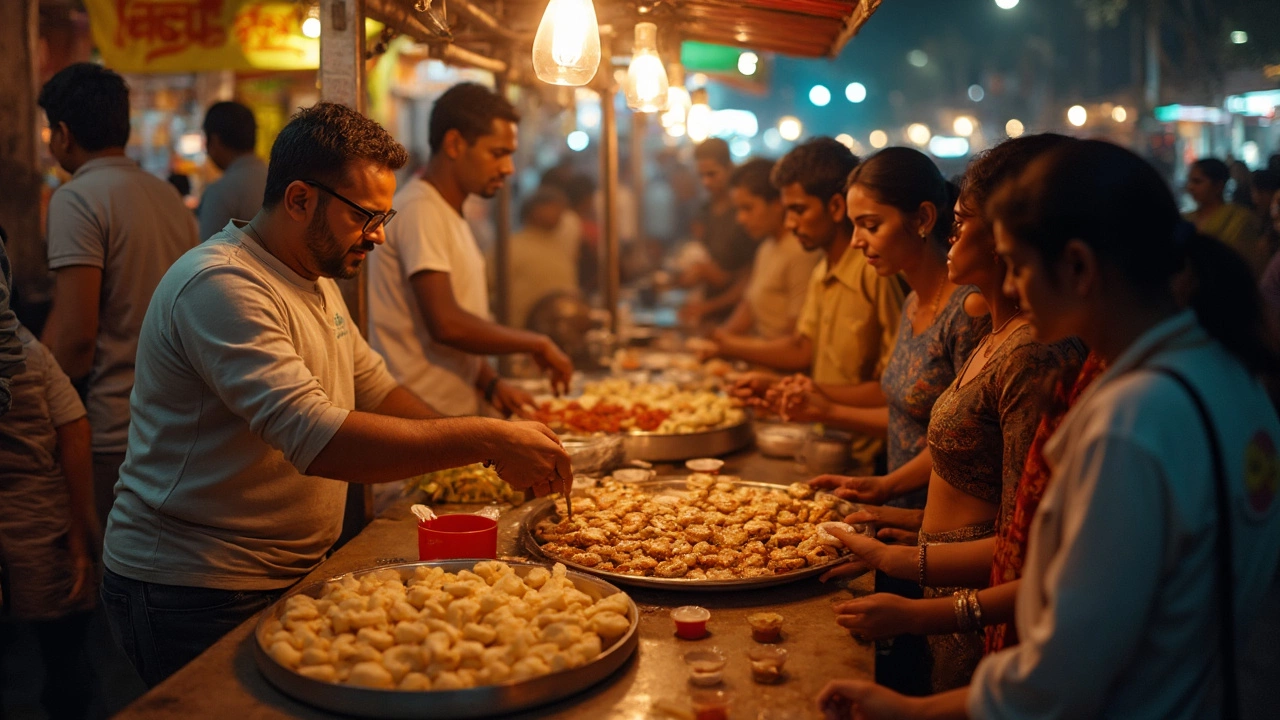Ask anyone who’s wandered the buzzing streets of Mumbai, Delhi, or Kolkata—street food is more than just a quick bite in India. It’s part of daily life. If you’ve ever wondered which snack grabs top spot as the most sold street food in the country, you’re not alone. The answer isn’t too surprising if you’ve spent time near schools, movie theatres, or busy markets: it’s pani puri (also known as golgappa in the north and puchka in the east).
Pani puri is everywhere. Stalls crowd every corner, especially in the evenings when cravings hit hard. Hungry college kids, office workers, even little kids like my daughter Nisha—everybody seems to crave that hit of spicy water and crispy puff. It’s cheap (a plate can cost less than a cup of chai), totally addictive, and the fun is in eating it right there, standing, with your friends.
- The Reigning Champion of Indian Street Food
- What Makes This Snack So Popular?
- Regional Variations and Unique Twists
- Tips for Enjoying Street Food Safely
- A Quick Look at Runners-Up
The Reigning Champion of Indian Street Food
When you’re talking about Indian food that actually outsells the rest, pani puri takes the crown. This crispy snack goes by different names—golgappa, puchka, and gupchup—depending on where you are, but it’s basically the same thing everywhere: little wheat balls, fried until crisp, then filled with spiced potatoes and dunked in flavored water that’s tangy, spicy, and just a little sweet.
What makes pani puri the most selling street food India can’t stop talking about? It’s the speed and spectacle. The vendor cracks the puris, adds potatoes and chutneys right in front of you, then dunks them in flavored water and passes them one at a time. It’s fast (you don’t wait long, even in crowds), and it’s interactive—street food at its funnest.
It isn’t just hype. In 2023, local news outlets estimated that over 2 million plates of pani puri are eaten daily just in Mumbai and Delhi alone. No wonder it’s the first thing that comes to mind if you ask anyone about Indian snacks.
| Region | Name | Special Twist |
|---|---|---|
| Mumbai | Pani Puri | Spicy-sweet water, crunchy sev topping |
| Delhi | Golgappa | Extra tangy water, sometimes with mint |
| Kolkata | Puchka | Potato mash with boiled chickpeas and tamarind-heavy water |
| Lucknow | Pani Ke Bataashe | Slightly milder, favoring flavored water variety |
Because it’s so light on the pocket, quick to eat, and wildly flavorful, pani puri is hands-down the MVP of Indian street food. You’ll spot pani puri stalls more often than you see taxicabs during rush hour. And let’s be real—when you grab a plate, stopping at just one serving rarely happens!
What Makes This Snack So Popular?
The reason most selling street food India like pani puri stands out? It delivers on flavor, fun, and pure value for money. First, let’s be honest—there aren’t many snacks where you get such a mix of tang, spice, crunch, and cool all in one mouthful. The water (pani) packs in flavors like tamarind, mint, black salt, and sometimes even hing. The puri is crunchy and fresh. Every bite pops—literally!
What really keeps people coming back is how personal the experience is. You don't just grab a packet and go home. The street vendor customizes each puri right in front of you, adding potato, chickpeas, or spicy water based on your taste. Want it extra spicy? More tangy? Less filling? They make it your way right there on the spot.
There's also something about the social buzz. This isn’t a solo snack. You’ll always see groups standing around the cart, plates in hand, chatting as they compete to see who can eat the fastest without spilling. For a lot of folks—kids on their way home from class, workers wrapping up their day, college students on a budget—it’s affordable and always ready in minutes.
- Street food guide: Pani puri is usually the cheapest and fastest option found at nearly every street corner in urban and semi-urban areas.
- Vendors keep things moving so you never wait long, and your food is always fresh.
- The thrill: Each puri is filled and handed out one at a time. You never know if the next bite will be spicier or tangier than the last.
| Reason | Why It Works |
|---|---|
| Affordability | One plate can feed a group, often for under ₹50. |
| Customization | Each serving is made as per your taste—spicy, sweet, or in-between. |
| Availability | Sold everywhere, anytime, especially after office hours and during summer evenings. |
Another trick? The portion size. You rarely stop at one. Most people keep asking for 'ek aur' until they’re completely stuffed. It might be simple, but pani puri just gets the job done—quick, cheap, and bursting with taste. No wonder it stays the most selling street food India has seen year after year.

Regional Variations and Unique Twists
The cool thing about most selling street food India is that it looks different depending on where you eat it. In Mumbai, you’ll find “pani puri”—the puris are packed with spicy potatoes, white peas, and a punchy mint water that hits you right in the nose. Slide over to Delhi and it’s “golgappa” territory. Here, they mix in chickpeas and even toss a bit of sweet tamarind chutney. It’s a different trip for your taste buds, trust me.
Now, swing to Kolkata, and you’ll hear folks call it “phuchka” or “puchka.” The stuff inside is mashed potatoes laced with black salt and tangy lemon. The water here tastes more sour, sometimes with a kick of spicy chili. Even the puri’s texture might feel rougher. Each city wants to own the title of best, and yeah, locals will fight you on what’s *real* pani puri.
Down south in states like Hyderabad and Bangalore, the stuffing can get creative. You might spot flavors like boondi (tiny fried balls) or even sprouts. Some cities up north offer flavored water in small pitchers, so you can pour as much as you want, mixing your own batch like some street food scientist.
| Region | Name | Main Filling | Flavored Water |
|---|---|---|---|
| Mumbai | Pani Puri | Potato, white peas | Spicy mint-coriander |
| Delhi | Golgappa | Potato, chickpeas | Spicy, sometimes sweet & tangy |
| Kolkata | Phuchka | Spiced mashed potato | Sour, chili, tamarind |
| Hyderabad/Bangalore | Pani Puri | Boondi, sprouts | Chili, sometimes sweet-sour |
In some trendy places these days, street vendors experiment with stuff like cheese, chocolate, or even fusion versions like “pizza puri.” Not everybody’s a fan, but it shows how Indian street food never stops changing. If you’re out to try the local superstar, always ask what’s inside before biting in—it’s half the fun and a good way to avoid weird surprises!
Tips for Enjoying Street Food Safely
So you’re eyeing those crispy pani puri shells and bubbling chutneys, but you want to make sure you actually enjoy your food—without regretting it later. Street food is tempting, but keeping a few basics in mind can save you a lot of trouble.
Here’s what I always check before grabbing my favorite Indian street food—and it works in most cities:
- Look for crowds. If locals are queuing up, the stall usually has a good turnover, meaning fresher food and fewer chances of anything going stale. Empty stalls during peak hours are a red flag.
- Watch the hygiene. See if the vendor is using gloves, tongs, or at least not handling money and food with the same hand. Clean hands and workspaces say a lot about how they prep the most selling street food India craves.
- Stick to cooked items if you’re not sure. Deep-fried stuff like samosas and kachoris are safer choices compared to things with raw veggies or water (unless you trust the source). That spicy pani puri water? If it’s filtered or bottled, great. If not, skip it or ask for dry puris instead.
- Go easy on the extras. Chutneys, sauces, and chopped onions look tempting, but these can hide germs if left out too long. Ask for less or avoid them if you’re worried.
- Carry pocket sanitizer or wet wipes. After finishing your food, a good wipe-down goes a long way, especially if you’re eating with your hands. My daughter, Nisha, loves running to wash her hands right after her snack—and honestly, so do I.
If you’re visiting a new city and unsure where to eat, you can always check popular food apps or local online groups. People love sharing their favorite street food India picks and warning about places best avoided.
| Food Type | Safety Level | Tip |
|---|---|---|
| Deep-fried (Samosa, Bhajiya) | High | Best eaten hot, straight from the fryer |
| Raw chutneys/salad toppings | Low | Ask for freshly made, or skip |
| Pani puri water | Variable | Safer if filtered or bottled water is used |
Don’t let fear stop you from enjoying street food—it’s part of the fun and flavor of India. A little attention goes a long way for a safe, delicious food adventure.

A Quick Look at Runners-Up
After pani puri, other Indian street food favorites hold serious ground. The competition is tight, and anyone who’s traveled across India knows there’s a different snack topping sales charts in almost every city. Here’s a quick look at the runners-up that keep people coming back for more.
Samosa is a close second. These crispy triangles stuffed with spicy potatoes (sometimes peas or meat) are a staple at casual meetups and office tea breaks. In 2023, a survey by Swiggy revealed that over 30 million samosas were ordered just through their platform in Indian cities. That doesn’t count the millions eaten curbside!
Then you’ve got vada pav, famously known as the “Mumbai burger.” Every Mumbai local has a favorite vada pav stall, and so many swear by their city’s version. It’s cheap, quick, and filling enough to power you through a long day. In fact, the Mumbai Railway Vada Pav Association claimed they serve over 2 lakh (200,000) vada pavs daily at city stations alone.
- Chaat: Not just one snack, but a whole family—aloo tikki, papdi chaat, dahi puri, you name it. North Indian cities, especially Delhi, are packed with chaat carts.
- Pav Bhaji: If you see a huge griddle sizzling with mixed vegetables and butter, chances are you’ve found pav bhaji. This Mumbai-origin dish has hardcore fans everywhere.
- Kathi Roll: Kolkata’s answer to a grab-and-go meal, these flaky-paratha wraps with egg or chicken fillings are a crowd favorite in eastern India.
"No matter where I go for research, I always find samosas, vada pav, and chaat near schools, bus stops, and parks—they’re rooted in our everyday rhythms." — Chef Ranveer Brar, Street Food of India documentary (2022)
If you’re skipping pani puri, don’t stress—there’s always something just as legendary a few steps away. And honestly, the best way to discover a new popular Indian snack is to ask a local where they get theirs. Most times, that tip is gold.
